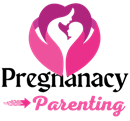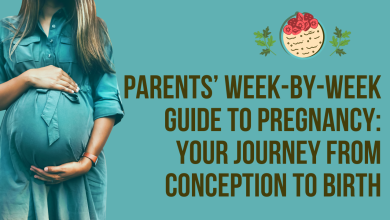Navigating the Third Month of Pregnancy: A Comprehensive Guide
This detailed guide should help moms-to-be navigate the third month of pregnancy with confidence, ensuring both their well-being and that of their developing baby as they continue this exciting journey.
Congratulations! As you enter the third month of your pregnancy, you’re approaching the end of the first trimester—a crucial period filled with significant changes and developments for both you and your baby. By this stage, many early pregnancy symptoms may persist, but you might also notice that your energy levels begin to improve. This guide will walk you through everything you need to know about the third month of pregnancy, including what you should be doing, developmental milestones, doctor’s appointments, FAQs, symptoms you might experience, and other important considerations.
What is the Third Month of Pregnancy?
The third month of pregnancy spans from week 9 to week 12. By the end of this month, your baby is no longer an embryo but a fetus, and most of the critical organ development is well underway. For you, this month marks the last stretch of the first trimester, a time when many women start to feel more confident in their pregnancy journey as the risk of miscarriage decreases.
Developmental Milestones in the Third Month
The third month is a period of remarkable growth and development for your baby. Here’s a week-by-week breakdown of what’s happening inside your womb:
Week 9: Developing Features
- What’s Happening: Your baby is now officially called a fetus and is about the size of a cherry. The embryonic tail has disappeared, and the body is beginning to straighten.
- Developmental Milestones: The facial features become more distinct, with the eyes fully formed but still closed. The earlobes are taking shape, and the nose is becoming more defined. The limbs are growing longer, and tiny muscles are developing, allowing the fetus to make small, spontaneous movements.
Week 10: Major Organ Development
- What’s Happening: At week 10, your baby is about the size of a kumquat, measuring roughly 1.2 inches long. Although still tiny, the fetus is growing rapidly.
- Developmental Milestones: Most of the vital organs, including the brain, heart, lungs, kidneys, and intestines, are fully formed and continue to mature. The heart is now fully developed and beating at a regular pace. The fingers and toes are no longer webbed, and the fingernails are beginning to form. The baby’s external genitalia are starting to develop, although it’s still too early to determine the sex on an ultrasound.
Week 11: Further Refinement
- What’s Happening: Your baby is now about the size of a fig, measuring approximately 1.6 inches in length. The body is starting to catch up with the head, which is still disproportionately large.
- Developmental Milestones: The bones are beginning to harden, particularly in the head and limbs. The baby’s skin, though still translucent, is thickening. The ears are almost fully formed and moving into their final position on the sides of the head. The diaphragm is developing, allowing the baby to start practicing breathing movements.
Week 12: Entering the Fetal Period
- What’s Happening: By the end of the third month, your baby is about the size of a lime, measuring roughly 2.1 inches long and weighing about half an ounce.
- Developmental Milestones: The digestive system is starting to function, with the intestines moving into the abdomen from the umbilical cord. The kidneys begin producing urine, which will be excreted into the amniotic fluid. Reflexes are becoming more pronounced, and your baby may start to make sucking movements. The placenta is now fully functional, providing nutrients and oxygen to the fetus.
What You Should Be Doing During the Third Month
As you approach the end of the first trimester, it’s important to continue focusing on your health and well-being. Here are some key steps you should be taking during the third month of pregnancy:
1. Continue Taking Prenatal Vitamins
Prenatal vitamins remain essential throughout your pregnancy, especially as your baby continues to grow and develop rapidly.
- Folic Acid: Critical for preventing neural tube defects, which occur in the early stages of pregnancy.
- Iron: Supports the increased blood volume required to nourish your growing baby and helps prevent anemia.
- Calcium: Essential for the development of your baby’s bones and teeth.
- Vitamin D: Supports calcium absorption and helps maintain your own bone health during pregnancy.
2. Maintain a Balanced Diet
A healthy diet is crucial as your baby’s nutritional needs increase during this month. Focus on eating nutrient-rich foods that provide the vitamins and minerals necessary for your baby’s growth.
- Eat a Variety of Foods: Include plenty of fruits, vegetables, whole grains, lean proteins, and dairy products in your diet. These foods are packed with essential nutrients like iron, calcium, and fiber.
- Stay Hydrated: Drinking plenty of water is important for maintaining amniotic fluid levels, supporting your increased blood volume, and preventing constipation.
3. Exercise Regularly
Regular exercise can help you maintain a healthy weight, improve circulation, and boost your mood. It also prepares your body for the physical demands of labor and delivery.
- Safe Exercises: Walking, swimming, and prenatal yoga are excellent choices that are generally safe throughout pregnancy. Always consult your healthcare provider before starting or continuing an exercise routine to ensure it’s appropriate for you.
4. Manage Stress
The third month of pregnancy can bring a mix of excitement and anxiety, especially as you approach the end of the first trimester. It’s important to manage stress effectively to support your overall well-being.
- Practice Relaxation Techniques: Consider incorporating mindfulness, deep breathing exercises, or prenatal yoga into your routine to help reduce stress.
- Stay Connected: Share your feelings with your partner, family, or friends. If you’re feeling overwhelmed, don’t hesitate to seek support from a counselor or therapist.
5. Prepare for the Second Trimester
As you approach the second trimester, start thinking about the next phase of your pregnancy. This includes planning for upcoming prenatal visits, considering any necessary lifestyle adjustments, and preparing for the physical changes that will occur as your baby grows.
- Research Childbirth Classes: Many expectant parents find it helpful to take childbirth and parenting classes during the second trimester. Start researching options in your area or online so you can plan ahead.
Common Symptoms During the Third Month
The third month of pregnancy often brings a continuation of early pregnancy symptoms, though you might also notice some changes as your body adjusts. Here are some common symptoms you might experience:
1. Nausea and Morning Sickness
Morning sickness often peaks around week 9 and may start to subside by the end of the third month. However, some women continue to experience nausea into the second trimester.
- How to Manage: Continue eating small, frequent meals, avoiding foods and smells that trigger nausea, and staying hydrated. Ginger tea, crackers, and acupressure wristbands can also help alleviate symptoms.
2. Fatigue
Fatigue is a common symptom during the first trimester and may persist into the third month. As your body works hard to support your baby’s development, you may feel unusually tired.
- How to Manage: Prioritize rest and aim for at least 7-8 hours of sleep each night. Taking short naps during the day can also help you feel more energized.
3. Breast Changes
Your breasts may continue to feel tender, swollen, or sore during the third month as they prepare for breastfeeding. You might also notice that your areolas (the dark area around the nipples) are getting darker and larger.
- How to Manage: Wear a supportive bra to reduce discomfort. Consider switching to a soft, non-underwire bra for added comfort, especially while sleeping.
4. Frequent Urination
As your uterus expands, it continues to put pressure on your bladder, leading to more frequent trips to the bathroom.
- How to Manage: Stay hydrated, but try to reduce your fluid intake in the evening to minimize nighttime bathroom visits. Empty your bladder completely each time you go to avoid the need to urinate again soon after.
5. Mood Swings
Hormonal fluctuations can cause mood swings, making you feel elated one moment and irritable or anxious the next.
- How to Manage: Practice stress-relief techniques like deep breathing, meditation, or gentle exercise. Talking to your partner or a trusted friend about your feelings can also help you manage mood swings.
6. Constipation
The increased production of progesterone during pregnancy can slow down your digestive system, leading to constipation.
- How to Manage: Eat a high-fiber diet that includes plenty of fruits, vegetables, and whole grains. Drink plenty of water and stay active to help keep your digestive system moving.
7. Headaches
Headaches can occur during the third month of pregnancy due to hormonal changes, increased blood volume, and stress.
- How to Manage: Rest in a dark, quiet room, apply a cool compress to your forehead, and stay hydrated. If your headaches are severe or persistent, consult your healthcare provider.
Doctor’s Appointments During the Third Month
Your prenatal visits during the third month are crucial for monitoring your baby’s development and ensuring your health is on track. Here’s what to expect during your appointments:
Routine Prenatal Visit (Weeks 10-12)
Your healthcare provider will:
- Check Your Weight and Blood Pressure: Monitoring weight gain and blood pressure is essential for tracking your health and your baby’s growth.
- Listen to the Baby’s Heartbeat: Using a Doppler device, your provider may be able to detect your baby’s heartbeat for the first time, which is an exciting milestone.
- Discuss Symptoms: Your provider will ask about any symptoms you’re experiencing and provide advice on managing them.
- Review Prenatal Test Results: If you’ve had blood tests done earlier in your pregnancy, your provider will review the results with you and discuss any necessary follow-up.
- Schedule the First Trimester Screening: This optional screening, typically done between weeks 11 and 14, involves an ultrasound and a blood test to assess the risk of chromosomal abnormalities such as Down syndrome.
First Trimester Screening (Weeks 11-14)
The first trimester screening is an important test that combines a nuchal translucency ultrasound with a blood test to evaluate the risk of certain genetic conditions.
- Nuchal Translucency Ultrasound: This ultrasound measures the clear space in the tissue at the back of your baby’s neck. An increased thickness can be associated with a higher risk of chromosomal abnormalities.
- Blood Test: The blood test measures levels of two substances: pregnancy-associated plasma protein-A (PAPP-A) and human chorionic gonadotropin (hCG). Abnormal levels can indicate an increased risk of chromosomal abnormalities.
The results of the first trimester screening can help guide your decisions about further testing, such as non-invasive prenatal testing (NIPT) or amniocentesis.
Frequently Asked Questions (FAQs) About the Third Month of Pregnancy
1. Is it normal to experience spotting during the third month?
Light spotting can occur during pregnancy and is often harmless. However, if the spotting is accompanied by cramping, pain, or heavy bleeding, contact your healthcare provider immediately, as it could be a sign of a miscarriage or other complications.
2. Can I continue to exercise during the third month of pregnancy?
Yes, exercise is generally safe and beneficial during the third month of pregnancy. Low-impact activities like walking, swimming, and prenatal yoga are excellent choices. Always consult your healthcare provider before starting or continuing any exercise regimen to ensure it’s safe for you and your baby.
3. When will I start to show?
Many women begin to show a small baby bump by the end of the first trimester, around week 12. However, this can vary depending on factors such as your body type, whether this is your first pregnancy, and your overall weight gain. If you haven’t started to show yet, don’t worry—every pregnancy is different.
4. When will my morning sickness go away?
Morning sickness often peaks around week 9 and may start to subside by the end of the third month. However, some women continue to experience nausea into the second trimester. If your morning sickness is severe or persistent, consult your healthcare provider.
5. Is it safe to travel during the third month of pregnancy?
In most cases, it’s safe to travel during the third month of pregnancy. However, it’s always a good idea to check with your healthcare provider before making travel plans, especially if you have any complications or concerns. If you do travel, make sure to stay hydrated, take frequent breaks, and carry a copy of your prenatal records with you.
Considerations for the Third Month of Pregnancy
As you approach the end of the first trimester, here are some additional considerations to keep in mind:
1. Educate Yourself About Pregnancy and Childbirth
The third month is a great time to continue learning about pregnancy, childbirth, and parenting. Consider reading books, joining online forums, and attending prenatal classes to prepare yourself for the months ahead.
2. Communicate with Your Partner
Pregnancy is a significant life change, and it’s important to keep the lines of communication open with your partner. Discuss your feelings, expectations, and any concerns you may have as you both prepare for the arrival of your baby.
3. Plan for the Second Trimester
As you approach the second trimester, start thinking about the next phase of your pregnancy. This includes planning for upcoming prenatal visits, considering any necessary lifestyle adjustments, and preparing for the physical changes that will occur as your baby grows.
4. Consider Your Work and Financial Situation
Now is a good time to start thinking about your work and financial situation. Consider discussing maternity leave options with your employer and planning a budget for the additional expenses that come with having a baby.
5. Prepare for Lifestyle Changes
Pregnancy often requires adjustments to your lifestyle. Whether it’s cutting back on certain activities, changing your diet, or finding new ways to manage stress, it’s important to be flexible and open to change as you navigate this new chapter in your life.
Final Thoughts
The third month of pregnancy is an exciting and crucial time as you approach the end of the first trimester. It’s a period of rapid growth and development for your baby, and a time for you to focus on your health and well-being. By staying informed, taking care of your body, and preparing for the months ahead, you can set the stage for a healthy and positive pregnancy journey.
This guide provides a comprehensive overview of what to expect during the third month of pregnancy, helping you feel prepared and confident as you continue this incredible journey toward motherhood. Remember to listen to your body, trust your instincts, and reach out for support whenever you need it. Every pregnancy is unique, so take things one day at a time and enjoy this special experience.






